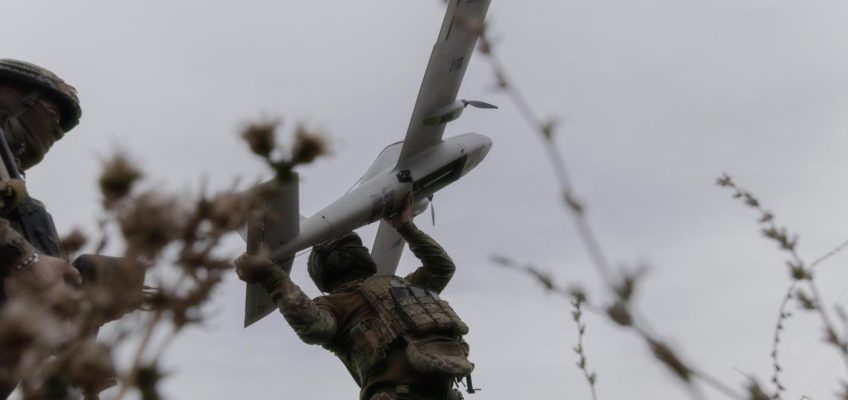In the month after President Vladimir Putin flew to Alaska to meet his American counterpart, Russia increased its airstrikes on Ukraine by nearly 50% while also sending drones and even fighter planes across NATO borders. In addition to a “drone wall” to secure the North Atlantic Treaty Organization’s eastern frontier, European Commission President Ursula von der Leyen has wisely recognized the need to support Ukrainian dronemakers with an additional $7 billion in funding. The question is how that money will be spent.
Ukraine needs help to ramp up production of all manner of unmanned weapons. It’s recently found success using interceptor drones against the Shahed-style loitering munitions Russia is using to bombard Kyiv and other cities. Better known are the cheap, buzzing “first-person view” quadcopters that have proven a great equalizer on the front lines. Strapped with explosives or used for reconnaissance, they can harass tanks, cut supply lines and break apart Russian formations.
Ukrainian troops provide near real-time feedback to manufacturers, who constantly upgrade the devices and their software to thwart Russian countermeasures. Drones costing less than $500 can disable assets worth millions. They are a major reason Russian advances have been so grindingly slow.
With European and U.S. support, Ukraine has built a formidable industrial base to produce these weapons. By early this year, some 500 private manufacturers were churning out a reported 200,000 units monthly. Ukraine’s defense ministry is aiming to procure about 4.5 million FPV drones this year — more than double last year’s tally. Officials say total production could reach 10 million annually if funds were available.
Western aid hasn’t yet matched the scale of the problem. A 20-nation drone coalition, co-chaired by the UK and Latvia, pledged 2.75 billion Euros to fund 1 million drones this year. Yet much of that money flows to European manufacturers, which delays deliveries and interrupts the frontline feedback loop that is Ukraine’s unique advantage. While von der Leyen’s new commitment — reportedly to be financed using interest income from frozen Russian assets — is far larger, the commission hasn’t yet said whether Ukrainian producers will be the primary beneficiaries.
Russia’s steady progress raises the stakes. Moscow has centralized mass production of both large and small drones, helping it seize the initiative on parts of the front. Ukrainian ingenuity is no longer enough; scale matters.
Denmark offers one model for bridging the gap. The country has acted as the European Union’s agent to channel revenues generated by frozen Russian assets directly to small Ukrainian manufacturers. It has also established a co-production facility that serves Ukraine now but can pivot to supplying Danish forces later. Co-production has advantages: Factories abroad are less vulnerable to Russian strikes and tie Ukrainian know-how into NATO supply chains. Still, distance slows down communications with frontline operators.
Some mix of such strategies makes sense for the new initiative. First and foremost, Europe should scale direct funding of Ukrainian factories to exploit their speed and low costs. At the same time, it can judiciously expand co-production projects that will ultimately contribute to its own defense. For its part, Kyiv is right to lift its unofficial ban on some drone exports; manufacturers hope the additional sales will help underwrite expanded production, thereby lowering per-unit costs.
Cheap drones alone won’t win the war; they have many limitations and also require trained operators, which are in short supply. Ukraine still needs air defenses, artillery and armor, as well as more manpower. But drones are the most cost-effective way to frustrate Russian advances and raise the price of aggression. Europe should fund them fast — and wisely.
— The Bloomberg Opinion Editorial Board


Leave a Reply